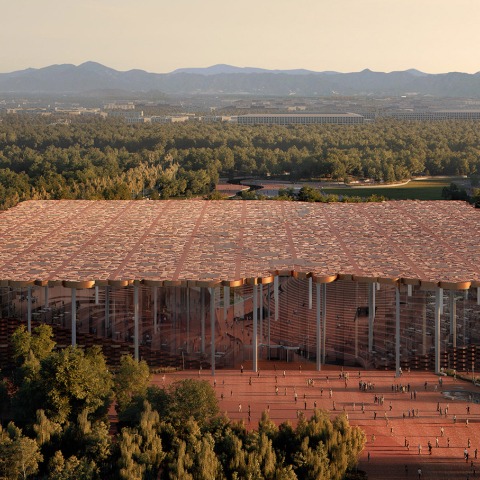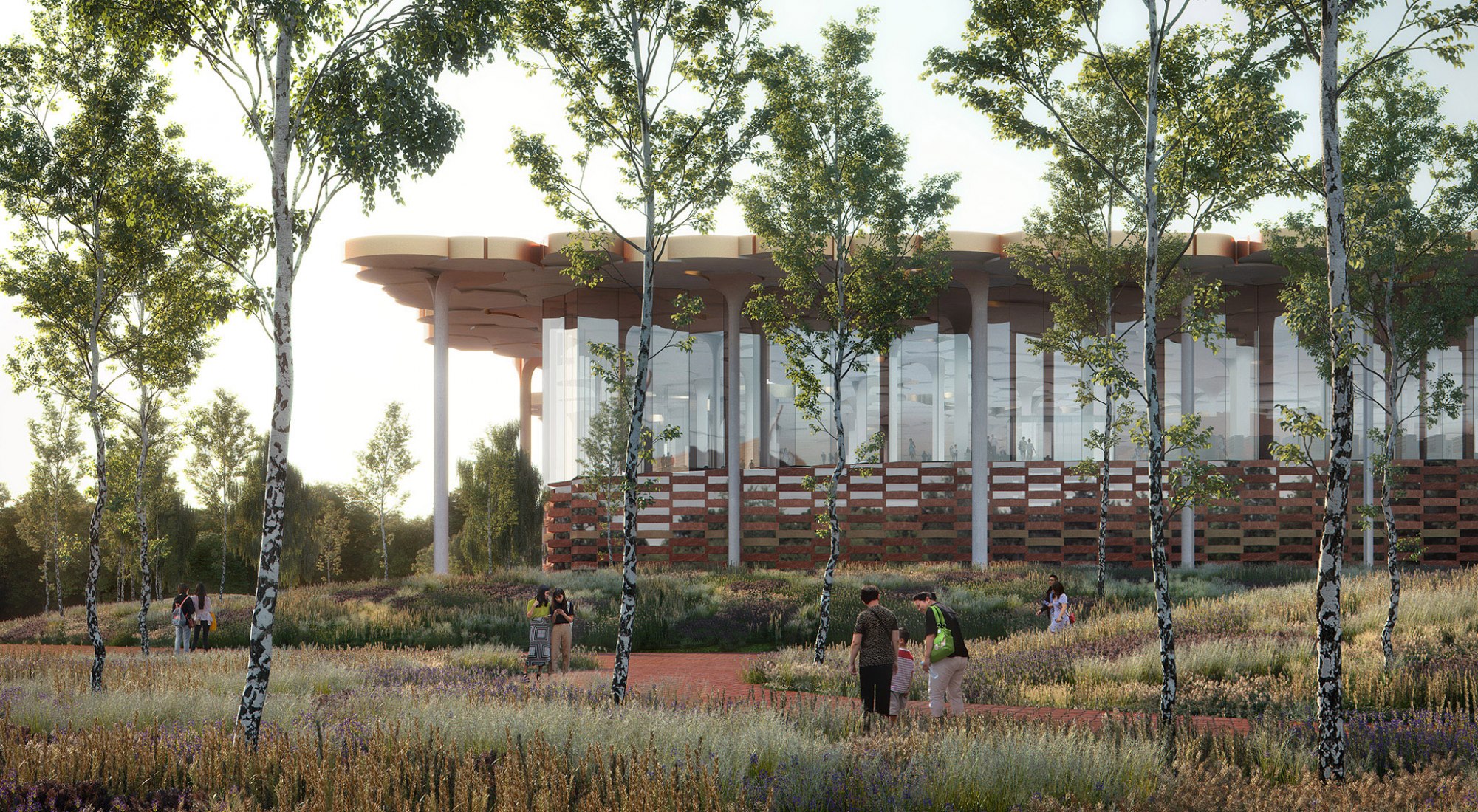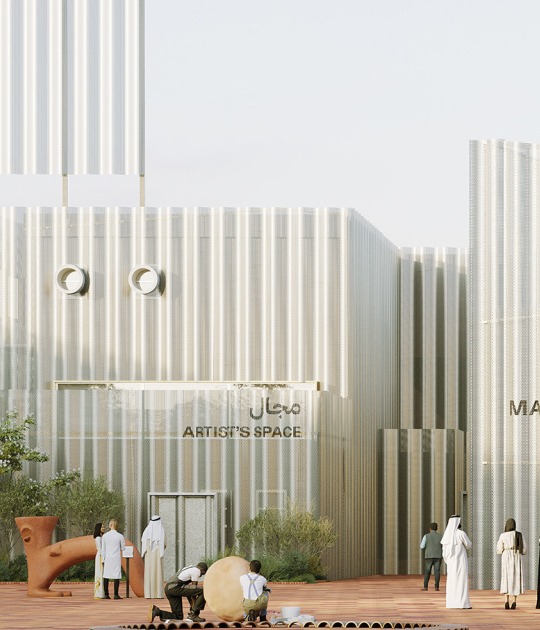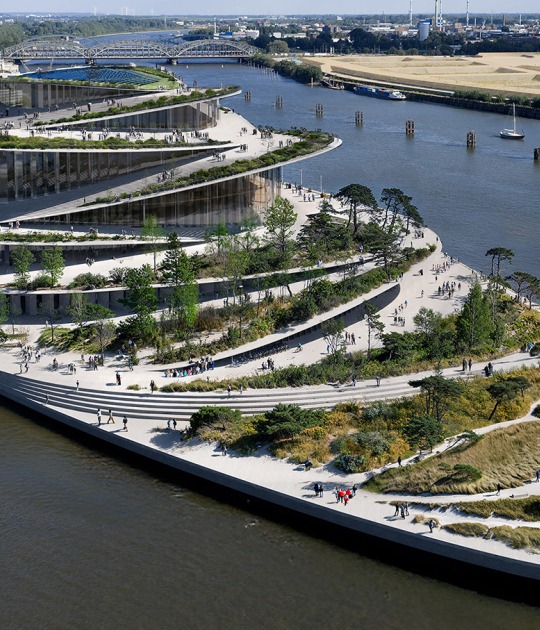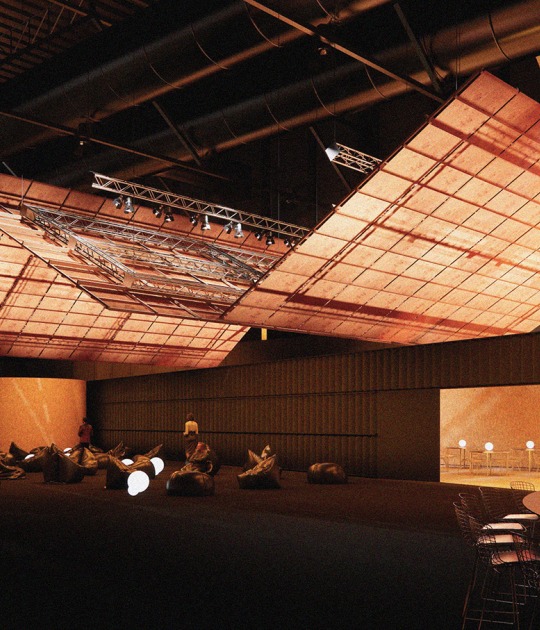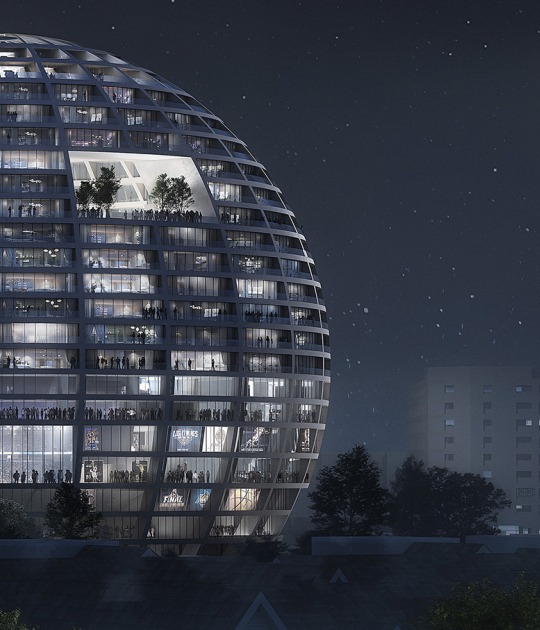Construction started in 2020 and since then, the roof has been put in place and the tall glass enclosure, up to 16 meters, is currently under installation. At completion, this will be China’s first self-supporting glass facade project.
Project description by Snøhetta
Openness and inclusion
The library was designed and created to celebrate a public space for learning, information exchange and open discussions, as well as celebrating Beijing’s heritage and rich cultural history of science, art and performance. This has been emphasized by creating a common space as the centre of the library, highlighted by a prominent sculpted learning landscape that covers and permeates throughout the whole library.
The big open space of the library is designed to bring people together - spatially but also intellectually: the large reading landscape promotes distribution and access to knowledge and creates an experience that is distinctly different to conventional sections of libraries. This openness gives people of all ages the opportunity to meet on one surface and interact in an amphitheatre-like space. Similar open spaces designed to promote interaction and exchange of knowledge can be found at different locations throughout the whole building.
Because of the highly transparent building façade, the library reveals itself and its inner activities to passers-by, inviting them into this generous space. On the inside of the building, the central valley forms the backbone of the library. Besides serving as the main circulation space from the north side of the building to the south side, it links people to all relevant spaces on top of and under the reading landscape.
A forest of knowledge
Extended from the sculpted reading landscape are columns that reach up to support the roof – a ginkgo forest-like canopy. Each tree column is also a building technology component, resulting in a distributed technology system that tackles climate control, lighting, acoustic comfort, and rainwater disposal. The stepped landscape areas with the tree-like surroundings invite people to sit down and take a break at any time on their journey through the building – creating an informal zone and the notion of sitting under a tree reading your favourite book.
Under the roof canopy and atop the sculpted landscape is a variety of experiential spaces where visitors can find their private place for reading and learning while always being connected to the larger common area. Creating a feeling of being tall and low, open and closed, private and public all at the same time. There are no designated "sections" or categorizations of knowledge.
A library for the future
Beijing sub-centre library aims to set a new benchmark for future library design in many aspects – from building and enclosure technology, social and environmental sustainability, to public ownership in cultural spaces. When creating the new Beijing sub-centre Library, Snøhetta and its partners have strived to meet the highest standards possible when it comes to sustainability. The roof has integrated photovoltaic (BIPV) construction elements that replace the conventional roofing and facade materials, utilizing the prime exposure of the rooftop to sunlight for renewable energy production and creating one of the most environmentally friendly roofs possible. The roof also has an overhang to reduce solar gain. The glass height has been reduced on the walls facing east and west, as well as adding an active sun-shading device facing the south and west façade. The glass itself is an insulated glass unit with Low-E- performance. All the major materials for the construction have been sourced locally, and the use of modular components with a rationalized structural grid has been used to reduce the need for customization for both the columns and the roof.
